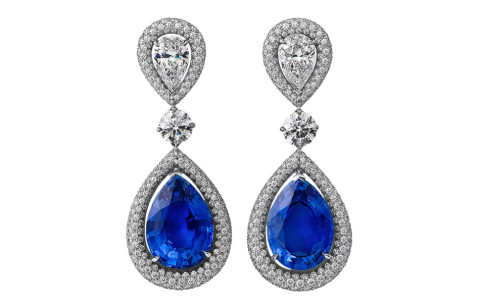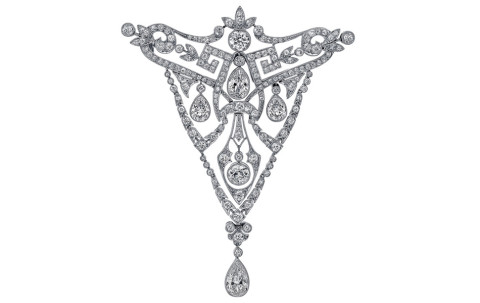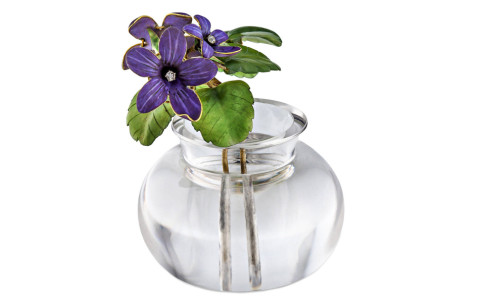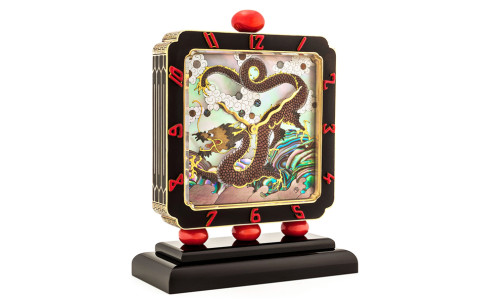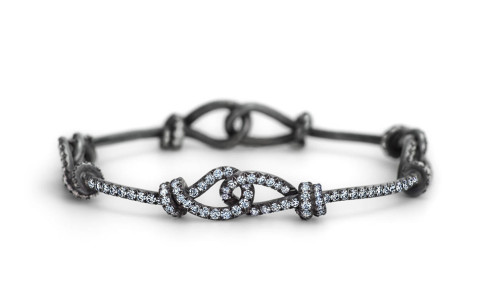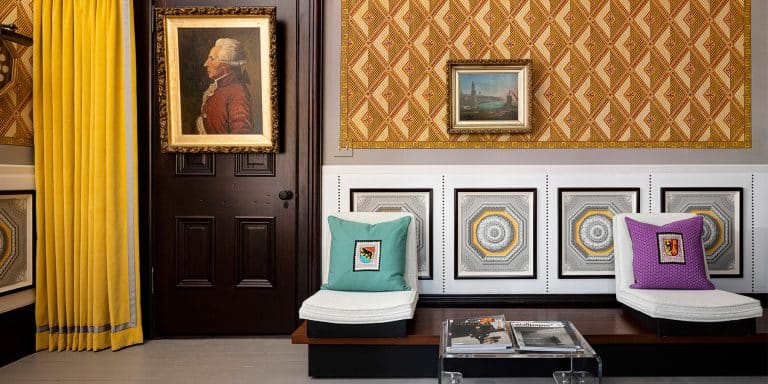
July 13, 2015Greenwich jeweler Steven Fox specializes in exquisite vintage estate pieces, plus unique creations of his own design and a few baubles from the Italian house Pomelatto. Top: The pair of little foxes adorning the shop’s logo are the perfect play on the jeweler’s own surname.
Greenwich, Connecticut, is a town known for its wealth, so it comes as little surprise that it has an abundance of jewelers to cater to its residents. The hamlet’s central artery, Greenwich Avenue, is dotted with them: There’s Betteridge, the stalwart, with its commanding range of both jewels and watches; around the corner, former Christie’s jewelry head Simon Teakle has opened his own shop of vintage and antique curiosities; Tiffany & Co. has been at its nearby outpost for the past 15 years; and the recently arrived Shreve, Crump & Low is part of a crop of new arrivals that confirms the street’s reputation as a sort of New England Rodeo Drive in miniature. Considering all the options, one wouldn’t be blamed for wondering if demand for jewelry here can keep up with supply. The population of Greenwich isn’t all that big, after all, even if its average annual household income is.
And yet, looking at the jewels scattered across Steven Fox’s leather-topped desk, in the office inside his atmospheric boutique just off the main thoroughfare, it’s clear that his offerings cater to the demands of a very specific client — namely one who is interested in the storytelling that Fox likes to do through his collection of both estate pieces and contemporary jewels of his design, which often feature rare colored gemstones. “Curiosity is one of the most important things that my clients have,” says Fox. “There’s so much history [in the vintage pieces] and that also comes into our own designs,” he says. “They’re all based on romance, history and passion.”
Among the goods set before him is a Verdura chess piece — a wooden figurine painted in red and decorated with carved rubies and natural pearls that once belonged to Doris Duke. Then there is a Fabergé diamond pin, which was a military gift from Czar Nicholas II to Kaiser Wilhelm II, and an Art Deco clock from Verger Frères for Charlton & Co., outfitted in onyx and coral with a dial inlaid with mother-of-pearl. “There’s a soul to all of these pieces,” Fox explains. “And the details are everything.”

A view of the handsome, light-filled store reveals polished wood-and-glass vitrines displaying glittering wonders from decades, and even centuries, past.

“I have coveted this brooch ever since I first knew of its existence,” says Fox of this Native American–celebrating piece, designed by Fulco di Verdura himself, in the middle of the last century, for Doris Duke, seen here in a vintage photograph. Fox’s own website romances the jewels with this sort of evocative pairing of images.
Fox is celebrating 30 years in Greenwich this year — certainly a feat for any retailer, but especially among the town’s ample competition. To acknowledge the anniversary in September, Fox says he’ll celebrate by having dinner with his family. “We’re very discreet,” he says. “We just try to keep things quiet.” Here, Fox talks to 1stdibs about his estate acquisitions, how he learned to design and his favorite period of jewelry.
When did you become interested in estate jewelry?
It was purely by coincidence. In my early years, a client came in to show me some vintage Cartier pieces. And there was just a sense of fantasy and whimsy to them, but at the same time there was a seriousness in their composition. It was almost an epiphany. I fell in love right there — and that was before I met my wife!

White and bright, clockwise from top left: South Sea baroque pearl necklace, 2015; Art Nouveau diamond, natural pearl and gold bracelet, ca. 1910; vintage David Webb diamond, gold and white enamel link bracelet, 1975; vintage Bulgari 19-carat cushion-cut diamond ring, ca. 1950; Fabergé Imperial Russian diamond and platinum brooch, ca. 1907

Sitting at a slight remove from the hustle and bustle of Greenwich’s main retail thoroughfare, Steven Fox proves an in-the-know destination for the most discriminating gem-hunters – and those who love them.
It’s clear that you’re very interested in the history of the pieces you collect and sell. Why is that?
The backstories, for me, are so critical. The acquisition of the piece is one thing, but to understand it is so important. I’m a history buff, but it’s really about the art — these jewels are art. They’re no different from a Picasso or a Kandinsky. They’re timelines. There’s a romance, a sensibility, an execution to them. When I’m no longer here, whether it’s 50 years from now or 500 years from now, will these pieces still be considered incredible works of art? I think so.
What is your favorite time period? And designer?
What really catches my eye is the time from about 1910 to 1950: the Retro period, specifically, with that heavy, industrial look. I love those lug-like, Machine Age designs from the years just following World War II. There’s a real visual impact with these pieces.

Objets of affection: porcelain figurine of a seated woman, ca. 1900; Verger Frères for Charlton & Co. Art Deco chinoiserie clock, ca. 1925-28; tigereye pearl, emerald and gold camel, 1920; Solange Azagury-Partridge enamel gold gaming ring, 2007; Steven Fox Mexican fire opal and emerald earrings, 2015; three-strand coral-bead necklace, ca. 1915
You used to carry a selection of other designers, but now you’ve narrowed it down to your own designs, estate pieces and select jewelry from Italian house Pomellato. At what point did you decide to pull back?
About 15 years ago. I decided that I didn’t want to be a pharmacy for jewelry designers. I wanted to have a voice. We were always making our own pieces, but I wanted to be more specific. Our designs are very atypical pieces. We like modern jewelry with older cut stones. We’ll even recut stones to give them an older sensibility.

No stranger to a dramatic display, here Fox spotlights a South Sea baroque pearl necklace.
How did you come to design your own creations?
I pretty much learned from my father. I started as a messenger for him when I was 14, in Cleveland, delivering to his clients. He owned three jewelry stores there. And growing up, we traveled and always went to museums. That’s how I learned about the details and execution. There’s a constant thread in all of it. The settings are impeccable, whether they are our own or vintage pieces.
VISIT STEVEN FOX ON 1STDIBS
TALKING POINTS
Steven Fox shares his thoughts on a few choice pieces

